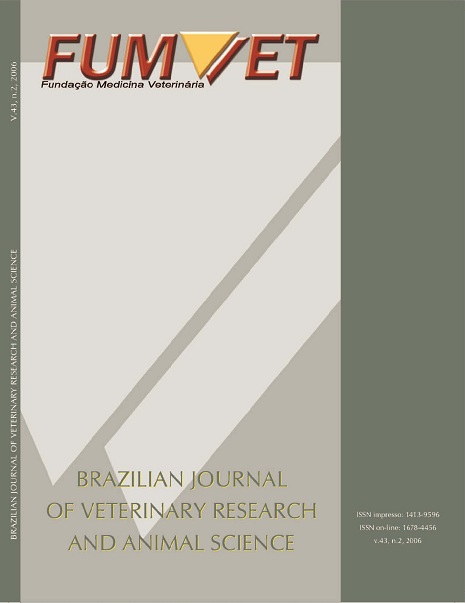The use of Elisa as a complementary tool for bovine tuberculosis control in Brazil
DOI:
https://doi.org/10.11606/issn.1678-4456.bjvras.2006.26507Keywords:
Tuberculosis, Bovine, Anergic, ELISAAbstract
The detection of infected animals is one of the main factors involved in tuberculosis control and, with some variations, is performed through intradermal tuberculin tests. Nevertheless, skin test-negative animals may be infected and represent an important threat to bovine tuberculosis eradication programs. Despite this well-known phenomenon, ELISA testing did not become a routine in tuberculosis control programs. Our purpose was to describe field applications of ELISA in the detection of anergic animals in Rio de Janeiro, Brazil. From 18 herds involved on a tuberculosis control program, two presented skin test-negative infected animals what have delayed and compromised the success of the program, with severe economic losses. Infection in those animals was identified through ELISA and confirmed by isolation of M. bovis from lung lesions. Therefore they were considered to be the most probable source of continuing infection and responsible for the maintenance of the disease in their herds. Without the use of serological tests as ELISA those cows would probably stay in their herds perpetuating the disease and the eradication of the disease in those herds would become impossible. In conclusion, we suggest the use of ELISA as a valuable complementary tool in order to identify possible anergic cows that may be acting as reservoirs of the agent in the herd.Downloads
Download data is not yet available.
Downloads
Published
2006-04-01
Issue
Section
UNDEFINIED
License
The journal content is authorized under the Creative Commons BY-NC-SA license (summary of the license: https://
How to Cite
1.
Lilenbaum W, Fonseca L de S. The use of Elisa as a complementary tool for bovine tuberculosis control in Brazil. Braz. J. Vet. Res. Anim. Sci. [Internet]. 2006 Apr. 1 [cited 2024 Jul. 26];43(2):256-61. Available from: https://www.revistas.usp.br/bjvras/article/view/26507





